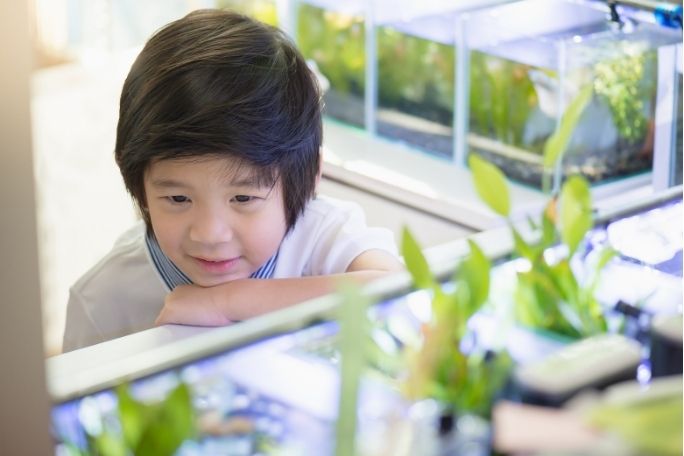Lesson summary
This is a STEAM lesson, which adds the Arts to STEM (Science, Technology, Engineering and Mathematics).
This lesson allows students to explore how aquaponics can improve the sustainability of home gardening practices by mimicking the natural symbiotic relationships between plants and animals. Students will explore how aquaponics systems cycle water through fish tanks and planting systems, observe different ways people have created their own aquaponics systems, and finally design their own 3D model.
Learning intentions:
Students will...
- understand why aquaponics systems are a sustainable option
- design and construct a model of an aquaponics system.
Success criteria:
Students can...
- explain the importance of sustainability
- explain how an aquaponics system contributes to sustainability
- describe different types of aquaponics systems
- sketch a design idea
- create a prototype of their design.
Lesson guides and printables
Lesson details
Curriculum mapping
We encourage you to teach STEAM both through and between disciplines (transdisciplinary).
This lesson could be used across multiple strands of the curriculum, including Science, Maths, and English. Consider focusing on a curriculum strand that will complement other areas of learning you and your students are working on.
Syllabus outcomes: ST2-4WS, ST2-10LW, ST2-11LW, MA2‑1WM, MA2‑1WM, MA2‑2WM, MA2‑3WM, MA2-9MG, MA2-10MG, MA2-11MG, MA2-12MG, MA2-14MG, MA2-15MG, MA2-16MG, ST2-5WT, ST2-11LW, ST2-14BE, ST2-15I, ST2-16P, EN2-1A, EN2-6B, EN2-9B, EN2-11D.
General capabilities: Literacy, Numeracy, Critical and Creative Thinking, Ethical Understanding, Personal and Social Capability.
Cross-curriculum priority: Sustainability.
Unit of work: STEAM Made Simple – Primary
Time required: 120 mins.
Level of teacher scaffolding: Medium – students will require support on an as needs basis when having difficulty with developing or constructing their ideas.
Resources required
- A variety of craft/construction supplies to create models of aquaponics systems (e.g. clay, plasticine, icy-pole sticks, balsa-wood, cardboard, tacky glue, cover paper, sticky tape, crepe paper, clear cellophane, markers, pencils)
- Aquaponics Design Sheet (A4, back to back, for any student who may need support)
- Aquaponics Essentials Resource (printed A3 or projected for the class to view)
- Aquaponics Handbook (printed copy for each student and an additional copy printed A3 or projected for the class to view)
- Aquaponics Systems Venn Diagram (printed A3 or projected with the ability to write on)
- Device capable of presenting a video to the class
- Plain white paper to sketch designs
- Plant pots
- Joining Clay Factsheet for students (if you are choosing to use clay or plasticine, consider printing this)
Skills
This lesson is designed to build students’ competencies in the following skills:
- Collaboration
- Communication
- Creativity
- Critical thinking
- Ethical understanding
- Problem solving
Additional info
STEAM Education:
Over recent years, the importance of STEM has been heavily promoted and discussed within fields of education. This has been within the context of ensuring that the next generation of students are provided with relevant knowledge and skills for the 21st century. STEM acknowledges the importance of the interrelated nature of science, technology, engineering and mathematics and the prominence of these skills in a world of continuous technological advancement.
What was missing from this original acronym, however, was an acknowledgement of the vital importance of artistic and creative thinking. The ability to think outside the box to develop artistic and creative solutions.
The relevance of art is integral to success in all of the original STEM areas, and so STEAM education is now moving to the forefront. Significant figures in science and technological advancement (notably Leonardo DaVinci, Albert Einstein and Steve Jobs) valued and applied the contribution of artistic skill into their work and art, design and creativity is also pivotal to success in industries such as marketing, advertising and promotion.
This is an original Cool+ lesson.


Welcome back!
Don't have an account yet?
Log in with:
Create your free Cool.org account.
Many of our resources are free, with an option to upgrade to Cool+ for premium content.
Already have an account?
Sign up with:
By signing up you accept Cool.org's Terms and Conditions(Opens in new tab) and Privacy Policy(Opens in new tab).